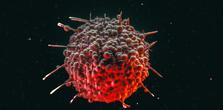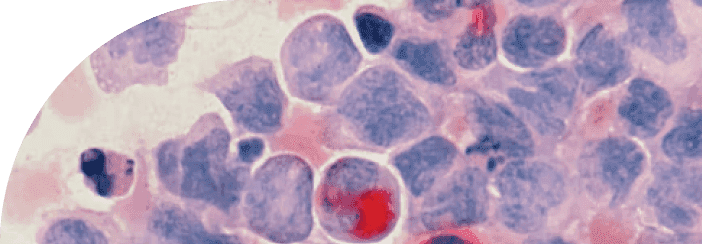
LDN
A powerful tool to increase energy, maximize endogenous endorphins, and minimize inflammation.
The persistent battle against chronic inflammatory ailments highlights an unyielding hyperactivity of our immune system. But could the answer lie in LDN, a promising anti-inflammatory agent? In this comprehensive review, we dive deep into the mechanisms by which LDN modulates our immune response, revealing not just its interaction with opioid receptors, but its profound influence on endorphin levels and inflammation. Delving further, we scrutinize LDN's effects on three prominent chronic inflammatory diseases: Multiple Sclerosis, Fibromyalgia, and Inflammatory Bowel Disease (IBD).
longevity
23 mins
By: Daniel Tawfik
Chronic inflammation lies at the core of numerous debilitating diseases, from autoimmune disorders to neurodegenerative conditions. While acute inflammation serves a protective purpose, chronic inflammation leads to tissue dysfunction and the acceleration of aging.If you were to look at a tissue biopsy of an older person and compare it to a younger person, you could easily distinguish the two—the older person's biopsy would have much more inflammation.
In recent weeks, we've discussed cellular senescence in detail and the role of the Sensescent Associated Secretory Phenotype, also known as the SASP. We reviewed how the excessive secretion of inflammatory molecules creates a toxic microenvironment that allows for many age-related chronic diseases to develop.
In individuals with chronic inflammatory ailments, there's a relentless hyperactivity of the immune system. Inflammatory cells, such as macrophages and lymphocytes, discharge signaling molecules known as cytokines. These cytokines play a pivotal role in sustaining an inflammatory response.
Consider cytokines as the intricate communication network of the body. These molecules act as couriers, conveying vital alerts about threats such as infections or tissue injuries. They are central to orchestrating our immune and inflammatory responses. However, in chronic inflammatory disorders, this network experiences a malfunction. Instead of occasional alerts, the system blares incessant alarms, manifesting as persistent pain and fatigue.
Recognizing the significance of these cells and cytokines, researchers have zeroed in on them as prime targets for developing effective anti-inflammatory therapies against chronic inflammation.
Low Dose Naltrexone (LDN), known for its safety profile, is now recognized as a promising therapeutic agent for systemic chronic inflammation. While its initial development was geared towards addiction treatment, LDN's impact on biological systems goes well beyond this original purpose. Its growing popularity in longevity research can be ascribed to its ability to enhance our body's natural endorphins and dampen inflammatory signals, even at low doses.
In our review of recent LDN studies, we explore the current state of research on its use for chronic inflammatory disorders. Our goal is to illuminate the underlying mechanisms of its effects and highlight the potential paths for clinical application.
We'll also explore LDN's impact on three major chronic inflammatory diseases: Multiple Sclerosis, Fibromyalgia, and Inflammatory Bowel Disease (IBD). Throughout this analysis, a clear theme emerges: LDN's therapeutic benefits arise from its innate anti-inflammatory properties, enhanced by its ability to increase the production of endogenous opioids.
The human body's intricate web of pathways, cells, and receptors can produce unforeseen drug interactions, resulting in multifaceted effects. Naltrexone exemplifies how a molecule, initially designed with a specific purpose in mind, can manifest diverse impacts contingent on its dosage.
Naltrexone was initially approved by the FDA for the treatment of opioid dependence. It functions primarily by binding to the body's opioid receptors, more specifically, the mu-opioid receptors. When these receptors are occupied by Naltrexone, particularly at higher dosages, the euphoric effects induced by opioids are reduced. This action is integral in its primary use as a deterrent against opioid misuse.
While high-dose Naltrexone tackles opioid addiction, its low-dose uses have captured researchers' attention. At these dosages, it engages with pathways beyond its main opioid-targeting role, offering broader therapeutic benefits geared towards enhancing healthspan.
LDN's mechanisms of action extend beyond merely engaging opioid receptors. It fine-tunes the immune response, mitigates inflammation, and influences growth factors favorably towards enhancing healthspan. LDN achieves this by transiently blocking opioid receptors, which triggers a compensatory surge in endorphins. These elevated endorphin levels play pivotal roles in reducing inflammation and fostering cellular growth.
However, to fully understand how LDN exerts its effects on the immune system, we must first delve into its interaction with Toll-Like Receptors (TLRs) — essential proteins in immune cells that act as sentinels, recognizing and responding to potential threats. Understanding this relationship provides insights into its subsequent effects on microglial cells.
LDN exerts its anti-inflammatory effects, in part, by targeting and inhibiting Toll-like receptor 4 (TLR4). Toll-like receptors (TLRs) belong to a family of proteins that function as the immune system's vigilant guardians. These receptors are evolutionarily designed to recognize and respond to specific molecular patterns, often indicative of microbial invaders.TLR4 is ubiquitously expressed in various immune cells, including macrophages and dendritic cells. These receptors have evolved to detect specific pathogen-associated molecular patterns (PAMPs), which are unique to microbial pathogens, as well as damage-associated molecular patterns (DAMPs) originating from the body's own damaged or dying cells.
Upon identifying these patterns, TLR4 instigates an inflammatory cascade, marshaling the immune system to counteract infections and manage tissue damage. This series of molecular events culminates in the activation of specific pro-inflammatory transcription factors. Once these transcription factors are activated, they upregulate the expression of genes responsible for producing a plethora of pro-inflammatory mediators.
Among these are potent cytokines like interleukin-1β, interleukin-6, and tumor necrosis factor-alpha, as well as chemokines and other molecules pivotal in orchestrating the inflammatory response. These mediators collectively play a crucial role in mobilizing the immune system to confront and neutralize potential threats, but an unchecked or prolonged release can contribute to pathological inflammation.
In conditions characterized by chronic inflammation, TLR4 remains in an almost perpetual state of activation. This can be attributed to consistent and repeated encounters with pathogens or the unrelenting release of DAMPs originating from tissues undergoing damage or stress. Such sustained activation sets off a relentless loop wherein inflammation perpetuates further tissue damage, which in turn spurs on more inflammation. This incessant cycle not only exacerbates tissue injury but also cements the chronic nature of the inflammatory response, making intervention and resolution increasingly challenging.
LDN acts as an antagonist to TLR4, effectively dampening the overzealous immune reactions it might instigate. When LDN binds to TLR4, it creates a form of molecular interference, effectively disrupting the subsequent signaling pathways that would otherwise culminate in the synthesis of pro-inflammatory cytokines.
Consequently, the therapeutic blockade of TLR4 activation by LDN serves a dual purpose: it curtails the excessive inflammation often seen in chronic conditions and paves the way for the restoration of immune equilibrium, shielding tissues from the deleterious effects of unchecked inflammation.
The reduction of TLR4 activity by LDN is significant in autoimmune diseases where aberrant immune activation and inflammation are drivers of the disease state—this is of particular importance in the context of glial cells and neuroimmune function.
The relationship between LDN and glial cells is an important aspect of LDN's potential neuroprotective properties. LDN's role as an anti-inflammatory mediator in the central nervous system is largely attributed to its interactions with glial cells, the primary immune cells within the brain and spinal cord.
Glial cells, often referred to as the "supporting cells" of the nervous system, play a crucial role in maintaining the health and function of neurons. However, in certain circumstances, these cells can become overactivated and contribute to the development and persistence of pathological pain states. This phenomenon is particularly relevant in chronic pain conditions, where glial cell activation can exacerbate pain signals and promote inflammation.
Microglia act as the first line of defense in the CNS against infections, injuries, and foreign substances. When there is damage or inflammation in the brain, microglia become activated and migrate to the site of injury or infection. They can phagocytose (engulf and remove) damaged cells, debris, and foreign invaders, helping clear the area and initiate healing.
Microglia, as central nervous system immune cells, can be activated by various triggers. Once activated, they release inflammatory and excitatory factors that may cause a range of symptoms and medical conditions, including pain sensitivity, fatigue, cognitive disruption, sleep disorders, mood disorders, and general malaise. In cases of chronic activation, the ensuing pro-inflammatory cascade can become neurotoxic, leading to several harmful effects.
Given the prominence of TLR4 on microglia over astrocytes, LDN's inhibitory effect on TLR4 posits its potential as an immunomodulator, targeting the very innate immune cells of the nervous system. As we discussed earlier, LDN is thought to act as an antagonist to TLR4, effectively blocking its activity and disrupting its inflammatory cytokine response. By blocking TLR4 activity, LDN inhibits the activation of microglial cells, stopping the ensuing pathological pain states.
Conditions such as Fibromyalgia may involve chronic glial cell activation and the subsequent production of pro-inflammatory factors. The hypothesis connecting LDN's anti-inflammatory effects to its impact on microglia activation is indirectly supported by the considerable symptomatic overlap between Fibromyalgia and cytokine-induced sickness behaviors.
How can we discern whether the positive response in Fibromyalgia is due to the increase in endogenous opioids or if it is due to the anti-inflammatory effects?
The hypothesis suggesting that LDN operates through glial cells to exert its beneficial actions is supported by research with the molecule dextro-naltrexone. Dextro-naltrexone is an isomer of Naltrexone. It is active at microglia receptors but lacks activity on opioid receptors.
Despite this distinction, dextro-naltrexone still possesses pain prevention and neuroprotective properties, indicating that the pain prevention, anti-inflammatory, and neuroprotective effects of Naltrexone do not rely on opioid receptors but are delivered through its anti-inflammatory benefits on microglia.
By targeting glial cells and modulating their activity, LDN is a potential therapeutic strategy for certain chronic pain conditions. Reducing glial cell activation and the subsequent dampening of the pro-inflammatory response within the nervous system contributes to restoring a more balanced inflammation state. This restoration, in turn, has the potential to decrease pain sensitivity and improve overall pain management for individuals experiencing chronic pain.
Opioid receptors, for a long time, have been chiefly linked to pain modulation and addiction pathways in popular understanding. However, the discovery of the Opioid Growth Factor (OGF)–Opioid Growth Factor Receptor (OGFr) axis shifted the paradigm, revealing a deeper layer of opioid receptor functionalities, particularly in cellular growth and regulation.
The OGF is an endogenous opioid, meaning it's naturally produced within the body. OGF interacts specifically with its corresponding receptor, the opioid growth factor receptor (OGFr), which is found in the nuclei of cells throughout the body.
The binding of OGF to OGFr initiates a cascade of intracellular events that typically inhibit cell proliferation. This natural braking mechanism helps to regulate the growth and development of cells and tissues, ensuring they don't multiply too quickly or excessively.LDN is what we call an OGF antagonist. When LDN is introduced, it transiently blocks OGFr, disrupting the regular OGF-OGFr interaction. As a compensatory response to this blockage, the body increases the production of OGF, leading to a higher concentration of OGF peptides circulating in the body.
Once the effect of LDN diminishes due to its short half-life, the increased levels of OGF are now free to interact with OGFr. The resulting enhanced OGF-OGFr activity can lead to an even more potent response in regulating dysfunctional cell proliferation and tissue repair than what would occur under normal physiological conditions.
In addition to its obvious impacts on cancer, this reduction of cell proliferation has the potential to influence a variety of health and disease states, including autoimmune disorders, inflammation, pain management, and even cancer progression.
LDN's engagement with OGFr is both nuanced and dose-dependent. When LDN binds to OGFr, it competitively inhibits OGF's binding. But, given LDN's relatively short half-life (around 4 hours), this inhibition is transient. At higher doses, the persistence of naltrexone in the system culminates in a sustained OGFr blockade, inadvertently promoting cellular proliferation.
This sporadic interruption catalyzes a cascade of cellular responses. In vivo studies demonstrated that low dosages of naltrexone (i.e. 1 mg/kg) that conferred an intermittent blockade in newborn rats decreased cell replication in brain, body, and somatic organ development. Mice inoculated with neuroblastoma cells and receiving 0.1 mg/kg naltrexone had decreased tumor growth. This concept of intermittent blockade of the OGFr resulting in a biofeedback production of OGF (enkephalin) and thus facilitating robust inhibitory action between OGF and OGFr is an important concept in the treatment of autoimmune disorders.
The surge in OGF levels, which we see with LDN administration, has a secondary impact on suppressing chronic inflammatory responses. OGF does this by influencing the production of cytokines.
Several different cell types coordinate their efforts as part of the immune system, including B cells, T cells, macrophages, mast cells, neutrophils, basophils, and eosinophils. Each of these cell types has a distinct role in the immune system and communicates with other immune cells using secreted cytokines.
In the presence of higher OGF levels, there is a decrease in the production of pro-inflammatory cytokines and, conversely, an increase in the production of anti-inflammatory cytokines. This alteration in the cytokine profile leads to a more balanced, less inflammatory immune response.
In a 2017 study led by Dr. Jarred Younger from the Neuro-inflammation, Pain, and Fatigue Laboratory, patients with Fibromyalgia were put on a 10-week administration of LDN. The study found that, after eight weeks of LDN administration, plasma levels of a range of broadly pro-inflammatory cytokines were decreased. In addition, we found that participants reported less pain and symptoms following LDN. These results support the hypothesis that LDN may help chronic pain conditions, such as Fibromyalgia, by acting as an atypical anti-inflammatory medication.
Immunomodulatory Effects:
T and B Cell Regulation: LDN's influence on T and B cell proliferation not only underscores its potential as a robust immunomodulator but also emphasizes its viability in the management of autoimmune disorders. In these conditions, an uncontrolled immune response often turns against the body's own tissues, resulting in inflammation and tissue damage.
Cytokine Modulation: Beyond just cell proliferation, LDN's capacity to modulate pro-inflammatory and anti-inflammatory cytokine balances offers another dimension to its therapeutic reach, further affirming its prospective role in autoimmunity.
Oncological Implications:
Cell Cycle Control: The mechanism through which LDN intermittently blocks OGFr hints at its ability to interfere with the cell cycle. This interruption, especially in the proliferation phase, could be pivotal in controlling the growth of malignancies.
Complementary Oncology: While not a standalone solution, LDN's role in cancer therapy could be seen as complementary. By reducing unchecked cellular growth, LDN could work synergistically with traditional oncological treatments, potentially preventing or slowing the progression and metastasis of malignant cells.
Multiple Sclerosis (MS) presents a complex therapeutic challenge due to its dual nature: it's both neurodegenerative and autoimmune. This has led to the exploration of Low-Dose Naltrexone (LDN) as a potential remedy, given its notable immunomodulatory properties.
Research into LDN's potential benefits for MS patients dates back to 2005. One seminal multi-center study from this period focused on the safety and efficacy of LDN for those with primary progressive MS. Notably, aside from establishing LDN's tolerability, the study also documented a marked reduction in spasticity—a debilitating symptom frequently encountered in MS cases.
What is the mechanism of action?
The study provided insights into the potential mechanism of action underlying LDN's effects in MS. The researchers measured the levels of β-endorphins, which are naturally occurring opioids, in the peripheral blood mononuclear cells of patients. They found that the administration of LDN coincided with an increase in β-endorphin levels, which is consistent with what we know about LDN's global mechanism of action.
The science here suggests a fascinating story: LDN might combat MS by interacting with specific opioid receptors that are entangled in brain inflammation processes. By "targeting" these receptors, LDN could be tweaking our immune responses and dialing down inflammation within the brain and spinal cord—both central battlegrounds in MS.To further understand the potential of LDN as a treatment for multiple sclerosis (MS), experimental studies have been conducted using a mouse model of the disease known as autoimmune encephalomyelitis.
One notable finding from these experimental studies is that LDN therapy restored reduced levels of OGF. This is significant because OGF signaling is an area of interest in the pathophysiology of MS. The reduction in OGF levels observed before the onset of clinical symptoms in the mice was reversed upon LDN treatment, suggesting a potential therapeutic role for LDN in restoring this imbalance of endogenous opioids.
Fibromyalgia is a complex health condition. It's known for causing widespread pain throughout the body, extreme tiredness, and problems with thinking clearly. Despite significant research, we're still not entirely sure what causes it. Scientists have three main theories they're currently investigating.
The first theory suggests that there may be a problem with how the brain and spinal cord communicate with each other, leading to increased pain sensitivity. For example, a person with Fibromyalgia might feel pain from something that wouldn't normally hurt (a condition known as allodynia), or they may feel more pain than expected during repeated exposure to a painful stimulus.
Researchers think this might be because of changes in the body's natural opioid function, alterations in how the body responds to pain relief medications, and changes in the immune system.
The second theory is related to the body's automatic control system, known as the autonomic nervous system. This system controls things like your heart rate and digestion without you having to think about it. Some scientists believe that Fibromyalgia might be linked to this system not working correctly, possibly due to ongoing stress. It is believed that this could lead to the body's 'fight or flight' response being constantly activated, resulting in changes in the body's pain-sensing system.
The third theory revolves around inflammation in the nerves located outside the brain and spinal cord. People with Fibromyalgia often have higher levels of certain substances that cause inflammation and enhance pain sensation. This suggests that inflammation might add to the pain felt in the brain and spinal cord and the nerves throughout the rest of the body.
Fibromyalgia has been the subject of several studies exploring the potential benefits of LDN. As discussed earlier, LDN can interfere with the activity of Toll-like receptor 4 in glial cells. This is important because Toll-like receptor 4 plays a role in triggering inflammation and pain signaling. By interfering with TLR4 activity, particularly in microglial cells, LDN can reduce the activation of inflammation and pain systems, particularly brain inflammation.
From a patient outcome perspective, LDN there are a number of data points that suggest that LDN has positive effects on Fibromyalgia outcomes.
In a pilot study on LDN and Fibromyalgia conducted by Dr. Younger, a group of ten women with Fibromyalgia participated in a single-blind placebo-crossover pilot trial. The study consisted of a two-week placebo period followed by eight weeks of daily administration of 4.5 mg LDN.
The results showed that six patients experienced a significant reduction in symptoms, surpassing the 30% threshold. Overall, there was a notable reduction of 2.3% in symptoms during the placebo phase, compared to a substantial reduction of 32.5% during the LDN phase relative to the baseline.
Additional benefits included reductions in daily pain, peak pain, fatigue, and stress levels. The study also identified a higher initial erythrocyte sedimentation rate—a measure of inflammation in the body—as a predictor for a positive response to LDN, indicating the potential of LDN in targeting the inflammatory component of Fibromyalgia. The study showed that if patients had higher inflammatory markers, they were more likely to have a positive response to the LDN treatment.
Building on these findings, Dr. Younger's lab conducted a 20-week randomized, placebo-controlled, double-blind crossover study involving 28 patients. The study comprised 12 weeks of LDN treatment and four weeks of placebo. Results showed that 57% of patients met the criteria for a positive response to LDN, demonstrating its efficacy in symptom reduction.
In a more recent study conducted by Dr. Younger, the effects of LDN treatment on cytokine levels were investigated in a group of eight women with Fibromyalgia. Cytokines are signaling molecules involved in the immune response and inflammation. The study, spanning a 10-week period, aimed to understand how LDN affects the levels of various inflammatory cytokines.
Let's imagine our body as a bustling city, and cytokines as its communication system – they're the messengers delivering urgent information about attacks (like infections) and damage. Specifically, they play a pivotal role in our body's immune response and inflammation. Now, with conditions like Fibromyalgia, something goes awry in this communication system, leading to a state of constant "emergency alerts" that result in pain and fatigue.
The outcome? It seems LDN might be quieting down these alarm bells. After LDN treatment, the study spotted a notable drop in various inflammatory messengers – some with quite a mouthful of names like IL-6, TNF-α, and TGF-β.
But why does this matter? Well, by turning down these constant "emergency alerts," LDN seems to ease inflammation. And in the context of Fibromyalgia, this could mean relief from relentless symptoms, offering patients a chance at a more comfortable life.
Crohn's disease (CD) is a chronic inflammatory condition that can affect any part of the gastrointestinal tract. Its symptoms can be debilitating and may include abdominal pain, severe diarrhea, fatigue, weight loss, and malnutrition.
It's a disease that is typically characterized by periods of intense flare-ups followed by periods of remission. Achieving and maintaining this remission is a key goal of treatment, as it can help prevent further complications, such as the development of fistulas or strictures, and improve patients' quality of life.
Over the past decade, there has been a significant expansion of the therapeutic landscape for Crohn's Disease. Many of these newer treatments have different mechanisms of action, meaning they work in different ways to reduce inflammation and promote remission. However, while these treatments can be effective, they are not without potential drawbacks.
Immunosuppressive drugs and biological therapies, which target specific parts of the immune system to control inflammation, are commonly used treatments for Crohn's Disease. However, they can have serious side effects.
Beyond the safety concerns, there is also the issue of cost. Biological therapies, in particular, can be extremely expensive, which raises concerns about their long-term sustainability, especially given the chronic nature of CD. This has led to increased interest in finding alternative treatments that are not only effective and safe but also more affordable.
The discussion of CD treatment is further complicated by the fact that CD is a progressive disease, and over time, patients may find that treatments that were once effective no longer work as well. This phenomenon, known as treatment cycling, leaves patients with fewer and fewer approved options.
In this context, the pursuit of alternative treatments for CD is crucial. The ideal treatment would be cost-effective, have minimal side effects, and have a different mechanism of action to provide an option for patients who have not responded to or cannot tolerate existing treatments. Researchers have been intrigued by the potential of LDN as a treatment option for Chron's disease and other inflammatory bowel diseases.
As we've illustrated, the role of the opioid system in the body's physiological processes extends beyond its well-known function in pain management. Among these less-understood roles is its potential involvement in gastrointestinal inflammation, a key characteristic of inflammatory bowel diseases (IBD) such as Crohn's disease.
Endogenous opioids seem to play a part in the process of inflammation. The μ-opioid receptor (MOR), one of the three types of opioid receptors in the body, is upregulated, or more abundant, in individuals with IBD. This suggests that the MOR may be involved in the disease's mechanism, possibly by regulating pro-inflammatory cytokines (proteins that mediate and control immune and inflammatory responses) and T-cell proliferation.
The enhanced presence of MOR in IBD sufferers has led to the exploration of selective MOR agonists—compounds that can bind to and activate these receptors—as a potential novel treatment approach for IBD.
This is where Naltrexone comes into play. Naltrexone is known to act as an antagonist for the MOR. This means it binds to the MOR but, instead of activating it, blocks it from being activated by other substances.
As we have discussed, instead of blocking the MOR, low-dose Naltrexone increases the levels of endogenous encephalin and endorphin (types of endogenous opioids) and positively modulates the MOR, leading to reduced gut inflammation.
Experimental models are often used in research to understand the complex disease mechanisms and to test potential therapeutic strategies before they are deemed safe and effective for human trials. In this context, researchers used mouse and rat models to study inflammatory bowel disease (IBD) and the effects of LDN. They found that in these animal models, LDN reduced inflammation partly by reducing the production of pro-inflammatory cytokines.
The research group explored the role of endoplasmic reticulum (ER) stress in IBD. The endoplasmic reticulum is a part of the cell responsible for protein folding, transport, and lipid metabolism. When the ER is not functioning correctly, it can lead to a condition called ER stress, which can cause inflammation and cell death.
Firstly, they chemically induced ER stress in two kinds of intestinal cells and found that Naltrexone was able to decrease the levels of a protein that typically increases in response to ER stress. They then induced ER stress by introducing bacteria to the cells and discovered that Naltrexone significantly reduced the bacteria-induced increase of this protein.
To confirm these findings, the team also created organoids—miniaturized and simplified versions of an organ produced in vitro in three dimensions—from biopsies of two IBD patients and observed a similar decrease in the expression of the ER stress-related protein when treated with Naltrexone.
Finally, they studied tissue samples from patients treated with low-dose Naltrexone and found that ER stress levels decreased with the treatment, although statistical significance wasn't reached due to the small sample size.
Overall, these experiments suggest that Naltrexone may help reduce ER stress in intestinal cells, which could potentially explain its positive effects on IBD treatment.
LDN's therapeutic benefits are multifaceted and complex. Consistently, across a broad spectrum of pathologies where LDN has potential applications, it exhibits a consistent ability to modulate chronic inflammation, particularly within the nervous system.
Although the full mechanisms of LDN remain to be fully elucidated, the evidence to date suggests it could represent a promising approach to treating chronic inflammation and enhancing healthspan. The breadth and depth of LDN's potential application underscore the need for continued research into this intriguing compound.
TAKE HOME POINTS
Chronic Inflammation as a Disease Driver: Chronic inflammation is identified as a fundamental mechanism underlying many debilitating diseases, including autoimmune and neurodegenerative disorders. Unlike acute inflammation, which serves a protective role, chronic inflammation can lead to tissue damage and accelerate aging.
Cellular Senescence and SASP: The article elaborates on cellular senescence and the Senescence-Associated Secretory Phenotype (SASP), highlighting how excessive secretion of inflammatory molecules can create a toxic environment conducive to age-related chronic diseases.
Cytokines and Immune System Hyperactivity: Chronic inflammatory conditions are characterized by an overactive immune system, with macrophages and lymphocytes releasing cytokines that perpetuate inflammation, leading to symptoms like persistent pain and fatigue.
Low Dose Naltrexone (LDN) as a Therapeutic Option: LDN is recognized for its safety and potential in treating systemic chronic inflammation. Initially developed for addiction, LDN now shows promise in longevity research for its ability to modulate the immune system and reduce inflammation at low doses.
Naltrexone’s Multifaceted Effects: Beyond opioid receptor antagonism, LDN interacts with various biological pathways, offering broader therapeutic benefits. It modulates the immune response, reduces inflammation, and influences growth factors, enhancing healthspan.
Toll-Like Receptor 4 (TLR4) Inhibition by LDN: LDN targets and inhibits TLR4, a key player in the immune system's response to pathogens and damaged cells. This action helps reduce pathological inflammation and restore immune balance.
Impact on Glial Cells and Neuroimmune Function: LDN's interaction with glial cells in the nervous system is highlighted as a mechanism for its potential neuroprotective properties. By modulating glial cell activity, LDN may offer therapeutic benefits for chronic pain conditions and neurodegenerative diseases.
Opioid Growth Factor (OGF)-OGFr Axis: The article discusses the OGF-OGFr axis, crucial for cellular regulation. LDN's action as an OGF antagonist can regulate cell proliferation and has implications for treating cancer, autoimmune disorders, and inflammation.
Therapeutic Implications: The text explores LDN's potential in treating multiple sclerosis (MS), Fibromyalgia, and inflammatory bowel disease (IBD), highlighting its immunomodulatory effects, ability to control cell cycle, and impact on cytokine modulation.
LDN's multifaceted therapeutic potential is underscored, with its ability to modulate chronic inflammation across various diseases. The need for further research to fully understand LDN's mechanisms and applications in longevity science is emphasized
Citations
Latest Longevity Research Straight to your Inbox
Sign up for The Longevity Blueprint, a weekly newsletter from Healthspan analyzing the latest longevity research.
Sign up for The Longevity Blueprint, a weekly newsletter from Healthspan analyzing the latest longevity research.





